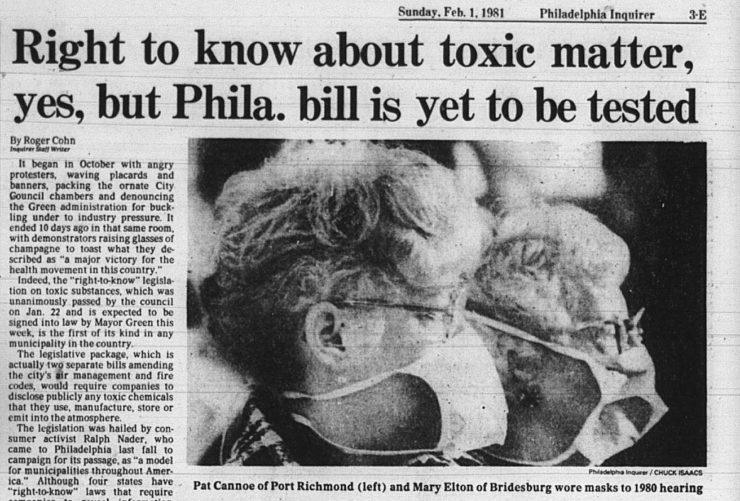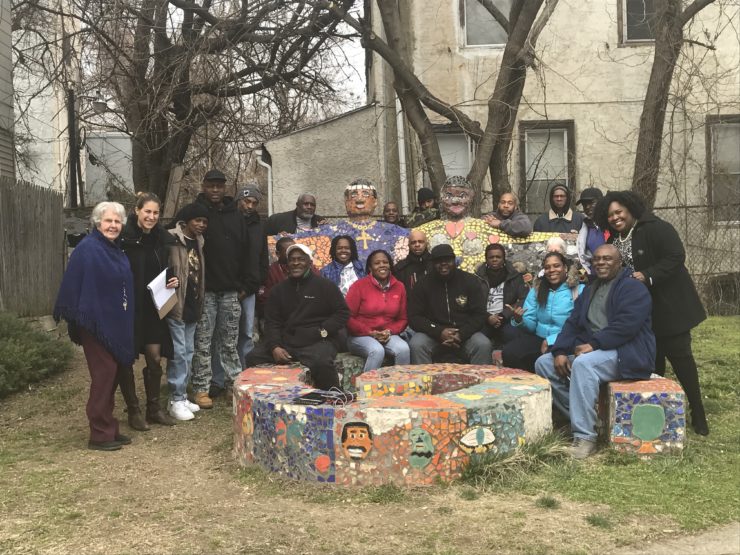
1981: Creating the Nation’s First Community Right to Know Ordinance
In 1979, residents in Bridesburg, a heavily industrialized community, faced cancer death rates that were twice the national average and air contaminated with many toxic chemicals. Working with Bridesburg residents and a coalition of unions and environmental organizations coalition, we drafted the first ever Community Right to Know ordinance, which gave citizens the right to know what toxic chemicals facilities were using and releasing in their neighborhoods. Facing down pressure from industry and business leaders, we secured passage of the ordinance through Philadelphia City Council in 1981. That same year, the Law Center helped found the Delaware Valley Toxics Coalition (DVTC), which drafted a similar Right to Know law that was adopted by the state of New Jersey. Philadelphia and New Jersey’s ordinances were models for local and state initiatives across the country, as more than 30 states and municipalities adopted similar laws in the coming years. In 1986, this movement culminated when congress passed the Emergency Planning and Community Right to Know Act (EPCRA), which put in place similar pollution disclosure requirements nationwide. Read more.

Now: Protecting Those Who Steward Vacant Land
New Jerusalem is a residential addiction recovery community run by the non-denominational nuns of the Medical Mission Sisters. On many of their vacant lots in North Philadelphia, they grow fruit and vegetable gardens that provide fresh produce for their community. Community spaces in Philadelphia face intense pressure from development and gentrification. Our Garden Justice Legal Initiative provides legal support and education to community gardeners and others who seek to return vacant land to green, public use. In 2018, we, along with pro bono counsel Morgan Lewis, helped New Jerusalem gain ownership of two privately owned lots, and we worked with city agencies to transfer the ownership of five publicly owned vacant lots that the sisters had tended for many years. Read more.
Next: Taking on Climate Change in Philadelphia
Undoubtedly, the next 50 years of our environmental justice work will be shaped by the effects of climate change. Look no further than Eastwick. In 2018, we helped the Eastwick Friends and Neighbors Coalition express their concern that a proposed land use strategy in their neighborhood increased the flooding risk raised by more frequent extreme weather events spurred by climate change. Read more.
50 Years of Fighting for Justice
Explore our history and our work today in each of our practice areas.
